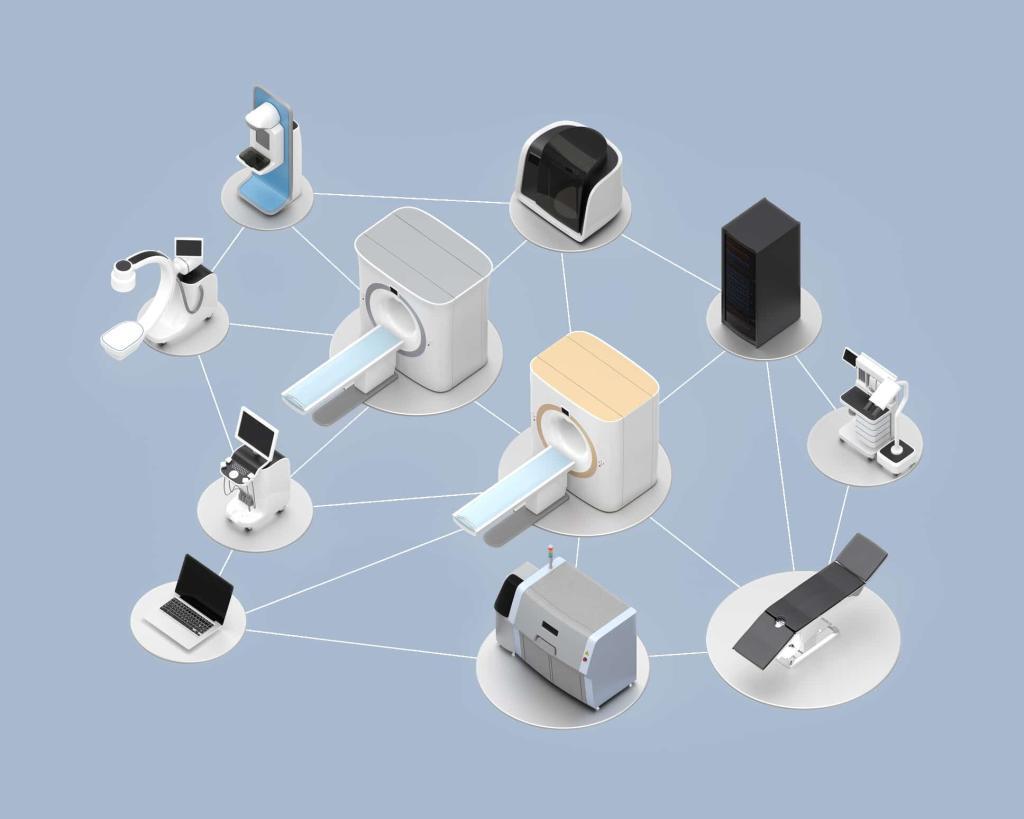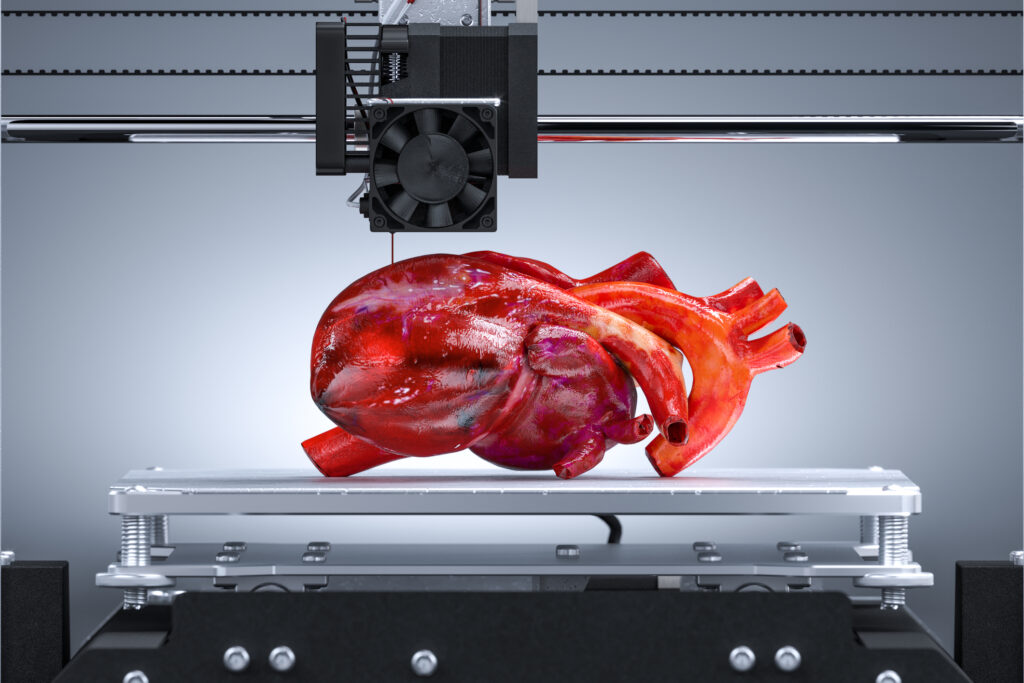MRI is non-invasive, free from harmful ionising radiation, and excels in delivering highly detailed soft-tissue imaging. It offers exceptional contrast between different tissue types, making it invaluable for diagnosing neurological, musculoskeletal, and cardiovascular conditions.
MRI equipment stands as the cornerstone of modern diagnostic imaging, enabling clinicians to detect pathology with unprecedented precision and plan treatments with confidence. As medical technology evolves rapidly, staying current with MRI innovations becomes crucial for delivering exceptional patient care.
This guide examines the latest developments in MRI medical equipment technology and explores how these innovations translate into improved patient outcomes and more efficient clinical workflows.
Overview of MRI Equipment
Modern MRI equipment operates on three fundamental components working in perfect harmony:
- Magnet systems create the primary magnetic field using superconducting technology
- Radiofrequency coils generate and receive signals for image creation
- Gradient systems provide spatial encoding for precise anatomical localisation
Understanding the different types of MRI machines is essential for making informed equipment decisions. Each configuration offers distinct advantages depending on your facility’s needs and patient population.
Key types of MRI machines available include:
- Closed-bore MRI systems – Traditional cylindrical design with field strengths from 1.5T to 7T
- Open MRI systems – Wider patient opening with reduced claustrophobia but lower field strength
- Extremity MRI equipment – Specialised for musculoskeletal imaging with a compact design
Recent technological improvements have been remarkable. Manufacturers have pushed field strengths, with 1.5T systems becoming the standard and 3T systems entering routine clinical use. Advanced coil technology now features multi-channel arrays with up to 128 elements, dramatically improving signal-to-noise ratios. Helium-free magnet designs are revolutionising operational economics by eliminating ongoing helium costs.
For facilities considering equipment upgrades, refurbished MRI equipment presents an attractive alternative. These systems typically offer 50-70% cost savings compared to new installations while maintaining proven reliability.
Experienced MRI equipment providers, such as Pro Imaging Services, specialise in refurbished systems that meet the same performance standards as new equipment.
Key Innovations in MRI Equipment
Artificial intelligence represents the most transformative developments in medical equipment, particularly in MRI technology. AI-powered image reconstruction algorithms can reduce scan times by up to 75% while maintaining or improving image quality. Modern MRI scan equipment now features intelligent protocol selection that automatically optimises imaging parameters based on patient characteristics and clinical indications.
Accelerated scanning techniques offer multiple pathways to reduce examination times:
- Higher RF channels have shortened scan times, allowing greater throughput, without compromising image quality
- Artificial Intellgence protocols have also sped up scan time and improved image quality
- Compressed sensing technology leverages data sparsity to reconstruct images from fewer measurements
- Parallel imaging methods utilise multiple receiver coils simultaneously for faster acquisition
- Simultaneous multi-slice imaging captures multiple anatomical slices concurrently
Patient comfort has become a significant design consideration for modern MRI machines. Wide-bore configurations with 70cm apertures dramatically reduce claustrophobia while maintaining image quality. Advanced acoustic dampening systems minimise examination noise, while some manufacturers have introduced ambient lighting and in-bore entertainment options.
Safety remains paramount in MRI operations, necessitating comprehensive protocols for the safe operation of MRI equipment. All accessories, monitoring devices, and patient support equipment must be MRI-compatible to prevent accidents and ensure optimal imaging performance.
Clinical Impact of Modern MRI Equipment
Advanced MRI equipment delivers significant clinical benefits across medical specialties. Ultra-high field 7T systems reveal pathological details invisible to conventional imaging, detecting subtle brain lesions and providing unprecedented insight into neurodegenerative processes.
Oncology has particularly benefited from advances in MRI equipment, image quality, and processing capabilities. Multi-parametric imaging protocols combine anatomical, functional, and metabolic information to improve cancer detection and characterisation. Real-time MR guidance enables precise biopsy targeting and treatment monitoring.
Key clinical applications where modern MRI equipment excels include:
- Neurological imaging – 3T systems detect subtle lesions and provide detailed brain mapping
- Oncology applications – Multi-parametric protocols improve cancer detection rates
- Musculoskeletal imaging – High-resolution coils visualise cartilage and soft tissue detail
- Cardiac imaging – Specialised protocols and coils enable comprehensive cardiovascular assessment
Modern MRI equipment plays a crucial role in precision medicine. Advanced imaging phenotypes now correlate with genetic biomarkers, enabling treatment protocols that adapt based on individual patient characteristics. For facilities seeking to optimise their imaging operations, Pro Imaging Services offers comprehensive workflow analysis and optimisation consulting services.
Challenges and Considerations
Despite remarkable advances, significant challenges persist in implementing MRI equipment. The financial investment for state-of-the-art systems ranges from $1 million to $3 million, depending on field strength and configuration. Installation costs add complexity, requiring specialised site preparation, magnetic shielding, and infrastructure modifications.
When budget constraints limit options, refurbished MRI equipment offers a viable alternative. These systems maintain proven reliability with proper maintenance while providing substantial cost savings.
Key cost considerations include:
- Initial purchase price – $1-3 million for new systems, depending on specifications
- Installation costs – Site preparation, shielding, and infrastructure requirements
- Operating expenses – includes utilities and consumables
- Service agreements – Maintenance contracts, typically 8-12% of purchase price annually (ranges from $70,000 – $150,000 annually)
Maintenance requirements for MRI-safe equipment remain demanding and critical for optimal performance. Daily quality assurance procedures ensure consistent image quality and system safety. The complexity of maintaining modern MRI scan equipment requires partnerships with qualified service providers who offer comprehensive maintenance programs.
Regulatory compliance adds another layer. FDA clearance is mandatory for all clinical systems, while ACR accreditation establishes quality standards for imaging facilities.
The Future of MRI Equipment
The future promises dramatic advances in MRI equipment technology. Ultra-high field systems operating at 3T and 7T are transitioning from research tools to clinical applications, providing unprecedented spatial resolution, novel contrast mechanisms, and support for more advanced coils and higher numbers of RF channels for improved signal capture. With ongoing innovations, 3T systems are expected to gain significant market share in clinical use.
Portable MRI technology represents another frontier with enormous potential. Point-of-care systems could bring MRI capabilities to emergency departments, intensive care units, and underserved regions. Helium-free magnet designs are also gaining popularity, making systems more sustainable, cost-effective, and accessible in challenging environments.
Emerging technologies shaping the future include:
- Ultra-high field MRI – 3T and 7T systems providing unprecedented resolution
- Portable MRI devices – Point-of-care imaging for emergency and ICU applications
- Advanced AI integration – Fully autonomous operation and predictive maintenance
- Hybrid imaging systems – Enhanced multi-modal capabilities for comprehensive assessment
- Helium-free magnet designs – Sustainable and cost-effective alternatives
- More RF channels and advanced coils – Improved image quality and efficiency
Artificial intelligence integration will continue expanding beyond current applications. AI imaging protocols will not only speed up scan times but also improve image quality, paving the way for future systems featuring fully autonomous operation, from patient positioning through image interpretation. Sustainability considerations are driving innovation toward more environmentally responsible MRI equipment, image processing, and system design.
More advanced coils
3T will gain market share
Helium-free magnet designs will gain popularity
AI imaging protocols will speed up scan times and improve image quality
More RF channels will be integrated
The future promises dramatic advances in MRI equipment technology. Ultra-high field systems operating at 3T and 7T are transitioning from research tools to clinical applications, providing unprecedented spatial resolution and novel contrast mechanisms.
Portable MRI technology represents another frontier with enormous potential. Point-of-care systems could bring MRI capabilities to emergency departments, intensive care units, and underserved regions.
Emerging technologies shaping the future include:
- Ultra-high field MRI – 3T and 7T systems providing unprecedented resolution
- Portable MRI devices – Point-of-care imaging for emergency and ICU applications
- Advanced AI integration – Fully autonomous operation and predictive maintenance
- Hybrid imaging systems – Enhanced multi-modal capabilities for comprehensive assessment
Artificial intelligence integration will continue expanding beyond current applications. Future systems may feature fully autonomous operation, from patient positioning through image interpretation. Sustainability considerations are driving innovation toward more environmentally responsible MRI equipment, image processing, and system design.
Selecting MRI Equipment Providers
Choosing the right MRI equipment providers requires careful evaluation beyond the initial purchase price. Technical specifications must align with clinical requirements, with field strength selection based on imaging needs and the patient population. Service quality often proves more important than initial cost considerations.
Essential evaluation criteria for MRI equipment providers include:
- Technical specifications – Field strength, coil selection, and imaging capabilities
- Service quality – Training programs, technical support, and response times
- Financial terms – Purchase price, financing options, and total cost of ownership
- Vendor stability – Market reputation, innovation pipeline, and long-term support
For healthcare facilities navigating the complex landscape of types of MRI machines and service options, Pro Imaging Services offers comprehensive equipment evaluation services, helping facilities select the right MRI equipment for their specific clinical needs and financial constraints.
Optimising MRI Equipment Performance
Healthcare facilities can maximise their MRI equipment investments through strategic optimisation approaches. Comprehensive staff training ensures operators understand advanced system features and can implement efficient scanning techniques. Protocol optimisation reduces variability and improves consistency across different operators.
The importance of maintaining MRI safe equipment standards cannot be overstated. All personnel working with MRI systems must understand safety protocols, equipment limitations, and emergency procedures.
Strategies for maximising performance include:
- Comprehensive staff training – Regular education on system features and safety protocols
- Protocol standardisation – Consistent examination procedures across operators
- Quality management systems – Ongoing monitoring and continuous improvement
- Patient throughput optimisation – Balancing efficiency with quality care delivery
Healthcare facilities seeking to optimise the performance of their MRI scan equipment should consider partnering with experienced service providers. Pro Imaging Services offers comprehensive optimisation services, including workflow analysis, staff training programs, and ongoing quality assurance support.
Conclusion
MRI equipment is evolving at a faster pace than ever, thanks to advances in artificial intelligence, magnet design, and patient-focused features. These improvements in MRI medical equipment lead to more accurate diagnoses, enhanced patient comfort, and streamlined workflows for clinicians.
When planning a new MRI installation or considering refurbished MRI equipment, healthcare facilities need to match their choices with their specific needs and budget. Modern types of MRI machines are complex, so it’s essential to work with experienced MRI equipment providers who can guide long-term success.
For those seeking advanced MRI solutions, Pro Imaging Services offers comprehensive equipment, service, and support packages. Their team helps facilities choose and fine-tune MRI systems, ensuring each investment supports both clinical goals and patient care.
The future of diagnostic imaging relies on adopting the latest technology while prioritising patient safety and comfort at its core. To stay informed on medical imaging trends, research, and innovation in diagnostic imaging and nuclear medicine, follow Open MedScience for expert updates.
Disclaimer
The information provided in MRI Equipment Breakthroughs: How 2025 Innovations Transform Patient Care is intended for general informational and educational purposes only. It should not be considered as medical advice, diagnosis, or treatment guidance. Readers should consult qualified healthcare professionals or certified MRI specialists before making any clinical, technical, or purchasing decisions related to MRI equipment.
Open MedScience does not endorse any specific product, manufacturer, or service provider mentioned in this article, and any references to companies or technologies are for illustrative purposes only. While every effort has been made to ensure the accuracy and timeliness of the content, advancements in MRI technology and associated practices may evolve rapidly, and Open MedScience assumes no responsibility for errors, omissions, or changes in industry standards.
All clinical applications, safety protocols, and equipment specifications should be verified through the appropriate regulatory bodies, professional guidelines, and manufacturer documentation prior to implementation.
You are here: home » diagnostic medical imaging blog »



